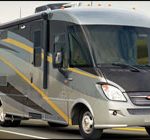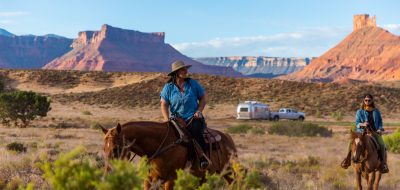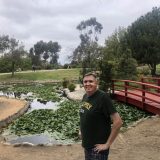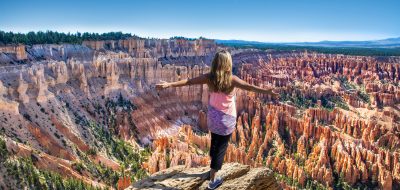By Bob Difley
The threat of early winter snows, sometimes arriving as early as October in the higher elevations of the Sierras, Cascades, and Coast Ranges, snowbirds, along with the feathered version of migrating birds, are starting to make plans for heading south. However, with daytime temps still topping 100 degrees in the lower desert snowbird roosts like the Coachella Valley in California, and the lower Colorado River, Phoenix, and Tucson areas of Arizona, you might want to consider heading for one of the high deserts for a month or so.
The Chihahua Desert in New Mexico averages around 2,000 feet in elevation, except for the lower Deming/Las Cruces area, which does not get as hot as the lower deserts. There is so much to see and do in the Four Corners area where Utah, Colorado, New Mexico, and Arizona meet, that you may have a hard time moving on. This is the great red rock Indian Country, with the expansive Navajo Nation Reservation and the smaller Hopi Reservation, where the broad mesas are carved into deep river-cut valleys. This is where you will find some of the oldest man-made structures in the country, the Pueblos that were home to the Sinaqua, Mogollon, Anasazi, and the even older Fremont people that lived here up to about 1300 before mysteriously disappearing before the arrival of the Europeans.
Now is a good time to visit northeastern Nevada’s Great Basin Desert, especially Great Basin National Park near Ely and the Humboldt-Toiyabe National Forest. These places will get too cold in mid-winter. St. George, Utah, is located in the banana belt of Utah, in the southeast corner within shouting distance of Zion National Park and a single day’s drive to Bryce Canyon National Park and Cedar Breaks National Monument. But at 10,000 feet in elevation, 2,000 feet higher than Bryce, you don’t want to wait too long as the snows come early.
You will find plenty of campgrounds, from the more plush full hook-up RV resorts to some wide open desert boondocking spots. In between are some no hook-up state parks, reservation campgrounds, and National Park campgrounds. If you are comfortable with dry-camping and boondocking, these are good choices for the shoulder months. You may even end up waiting until the cold northerly winds start whipping the sand about and a light morning frost dusts the cacti before you think about moving further south.
For hints and tips on dry-camping and boondocking, as well as how to find these unpublished desert campsites, check out my ebook, Boondocking: Finding the Perfect Campsite on America’s Public Lands, as well as other locations on my Web site.







Betty Bradshaw
In October of 2007 we traveled to Chama, NM after the baloon festival. The mountains, aspens, etc. were breathtaking. Be sure to take your time and stop often to drink in all of the beauty. We rode the Toltec-Cumbres train up into Colorado (11,000 ft.) and enjoyed a very good and filling lunch before returning to Chama. We visited the Goat Cafe in Chama and shot pool with some local
Indians. We would like to go there again.
Bob Difley
Thanks for all the good suggestions for “shoulder” season, as the travel companies call the spring and fall. The key to choosing a good location during this time is altitude. Thanks for the great comments.
Ronald
Hi Bob,
Good article as usual. I would also suggest Canyon de Chelly and the Hubbell Trading Post to visit as well. Both are on the Navajo Reservation in northeastern Arizona and shouldn’t be too hot yet. Very neat city/county rv campground in Chinele with no hookups but lots of shade trees! Can’t remember the exact altitude, but seems like it was around 5-6k feet.
Haven’t made it into the northeastern corner of New Mexico yet, but understand it is tolerable as well in the fall. We will try to swing through there the middle of Oct. when we get done at the Alburquerque Balloon Fiesta.
Ken Wadsworth
Bob,
Your article is much appreciated by us who strive to be ‘true’ snowbirds — those who NEVER use a heater or an air conditioner.
Ken
Vicky & Bob Heron
Another choice for snowbirds would be Moab, Utah. We’re here right now and it’s a beautiful place with lots of red rock canyons, mesas, and plenty of activities. Many campgrounds are open until October 31st, but some are open year round. There are also some pretty good restaurants to be enjoyed here.